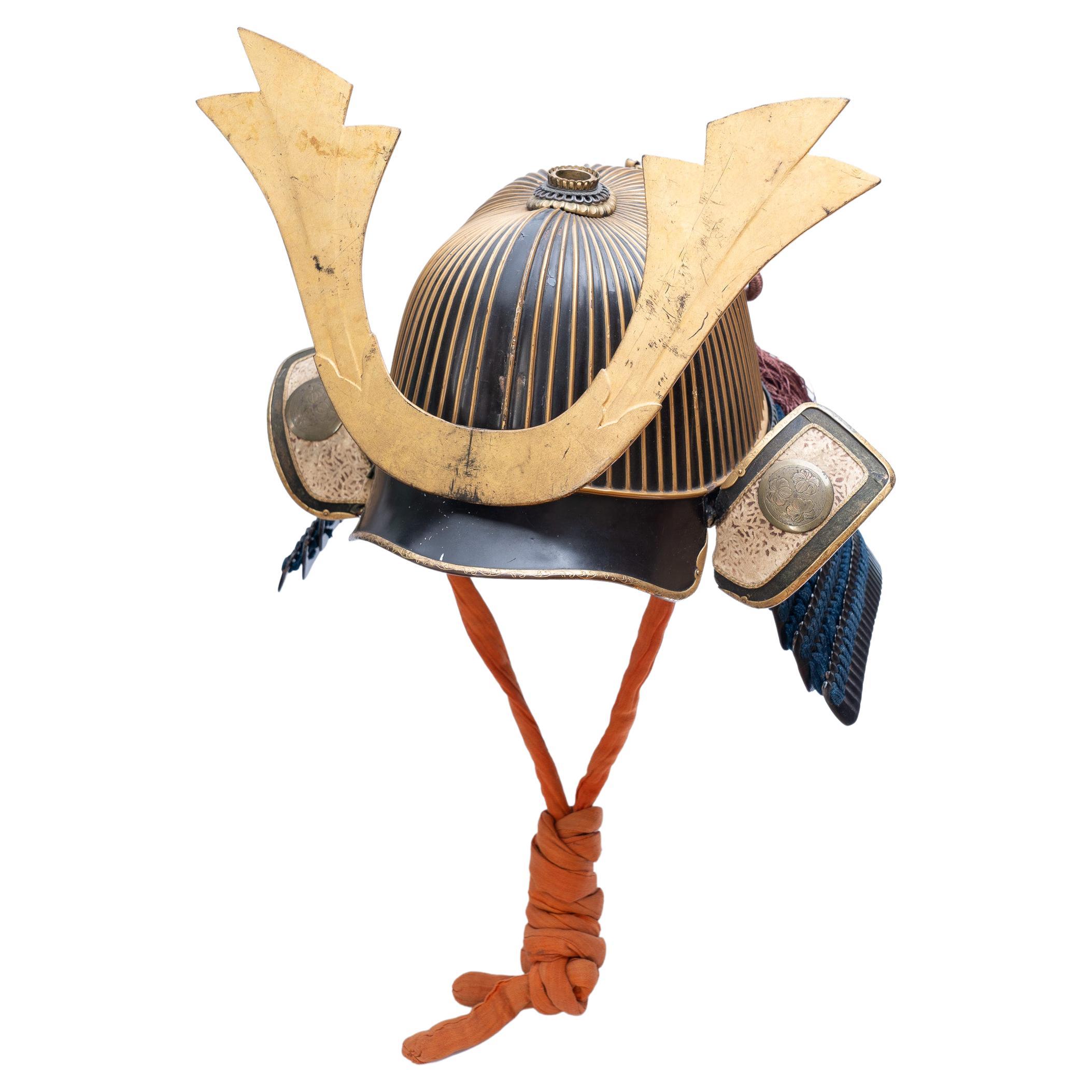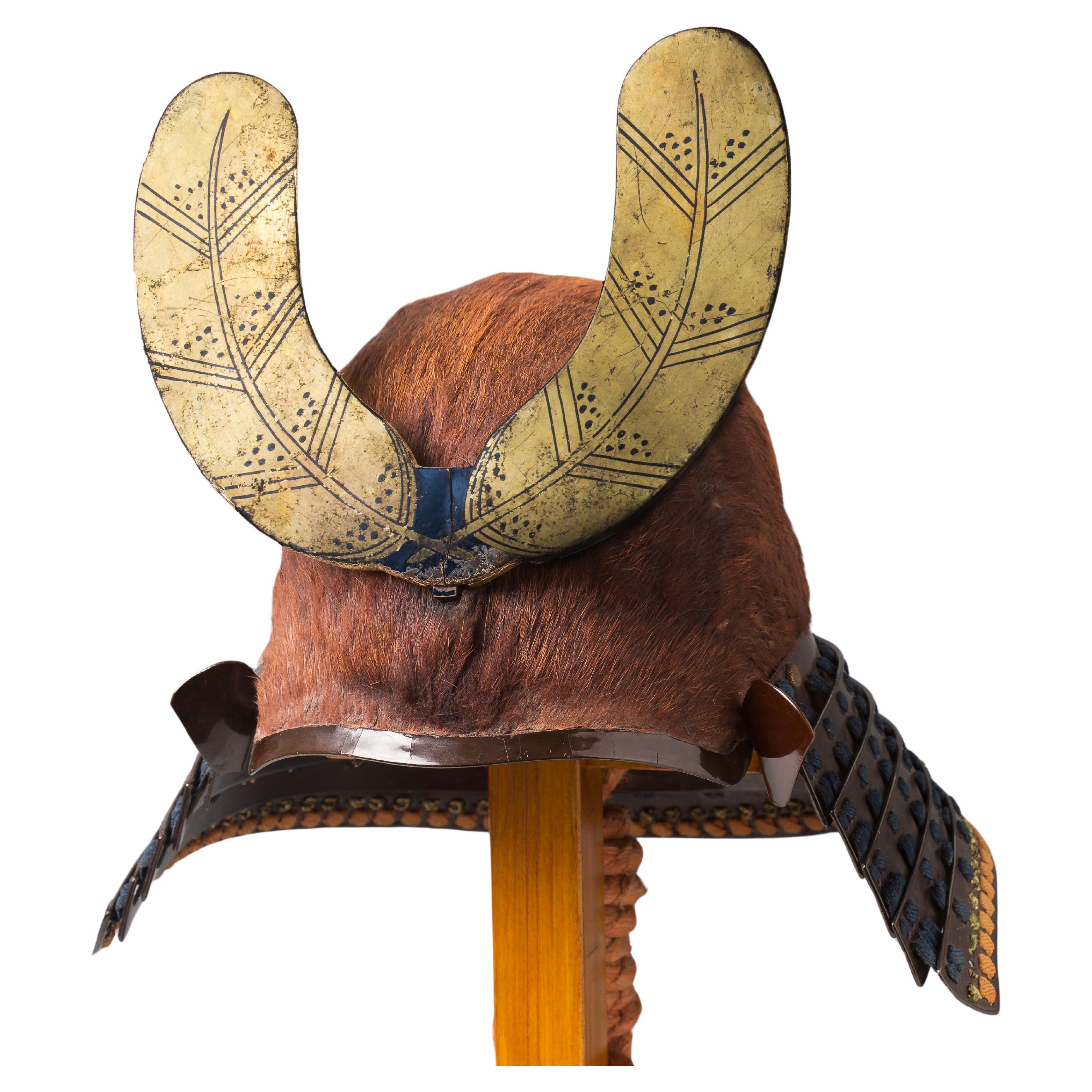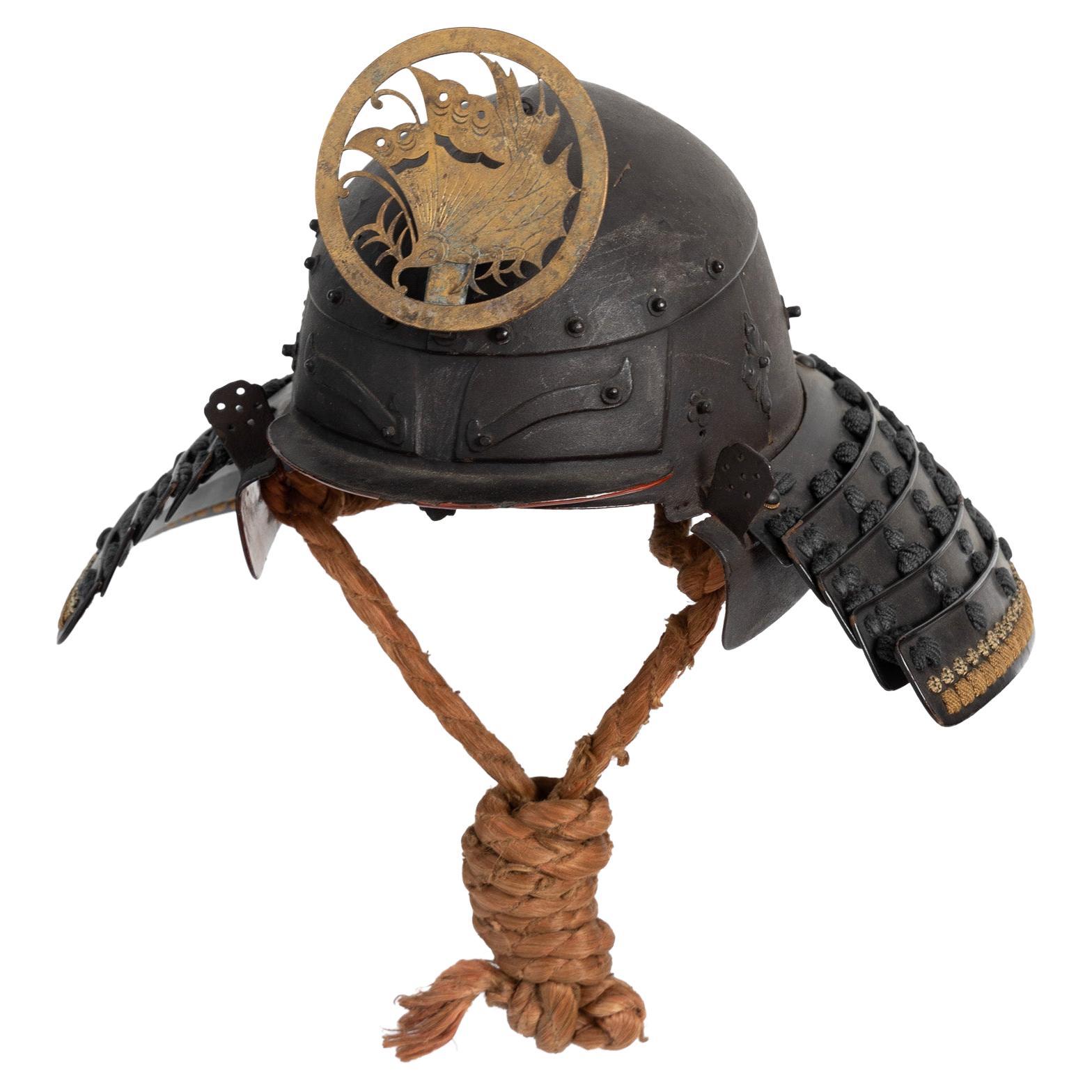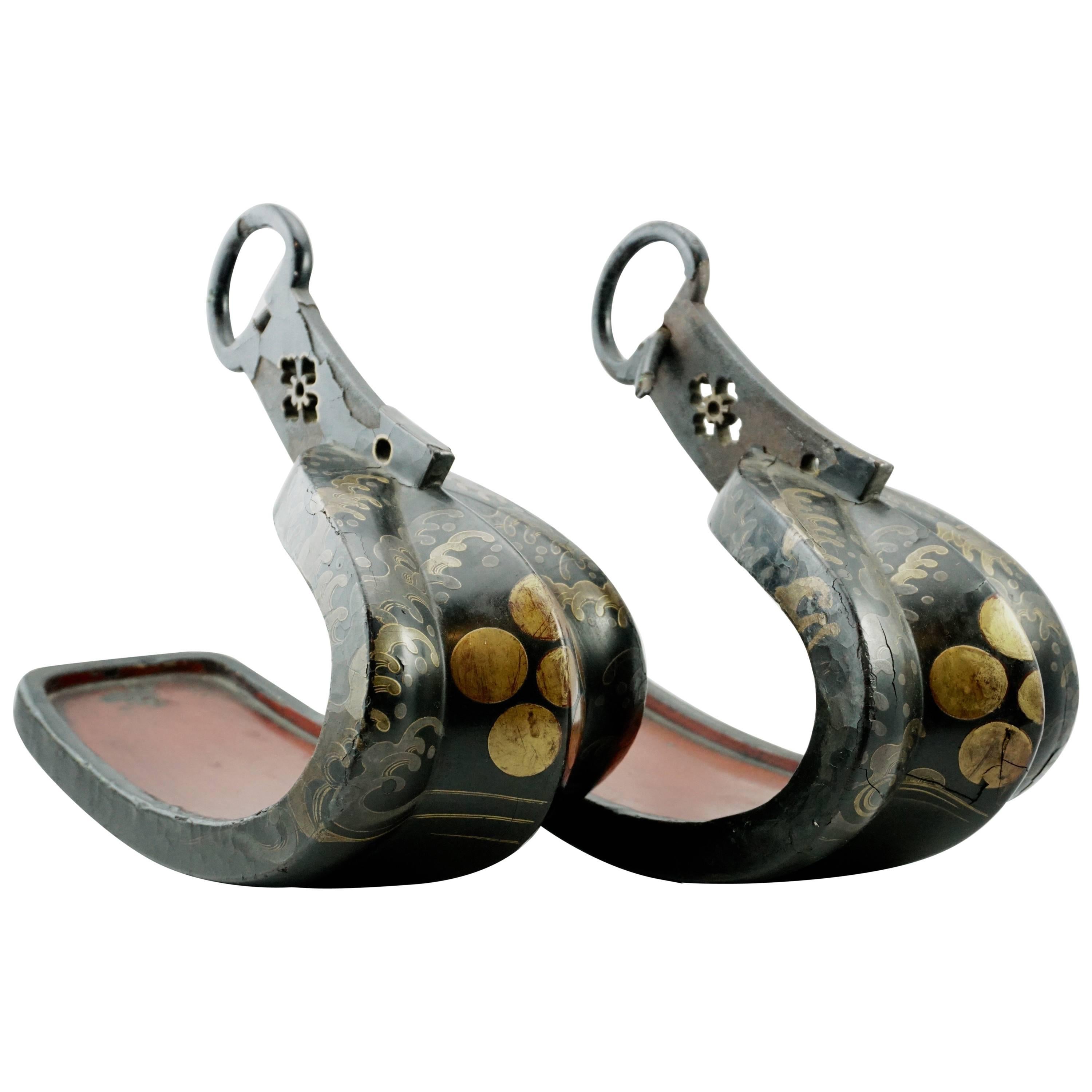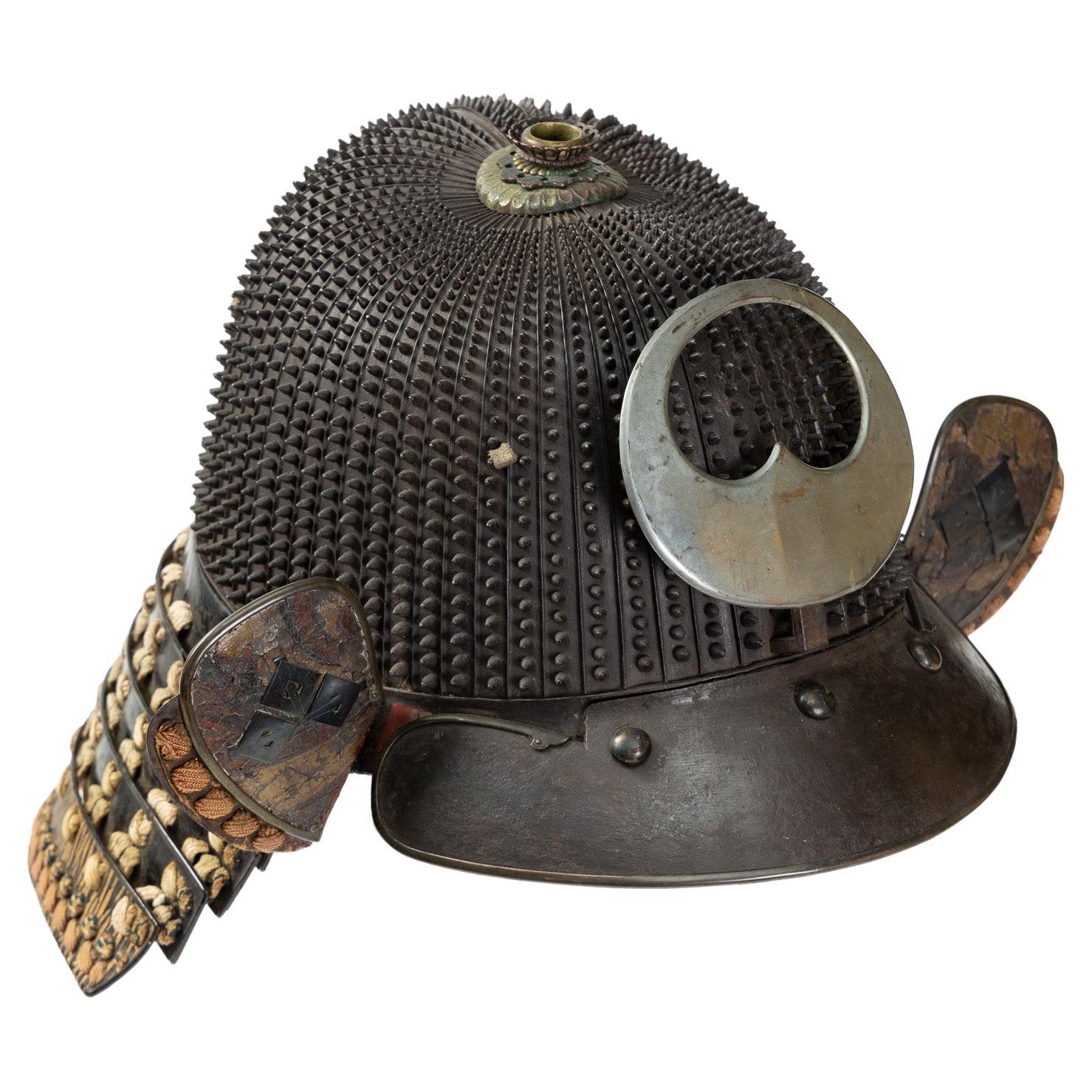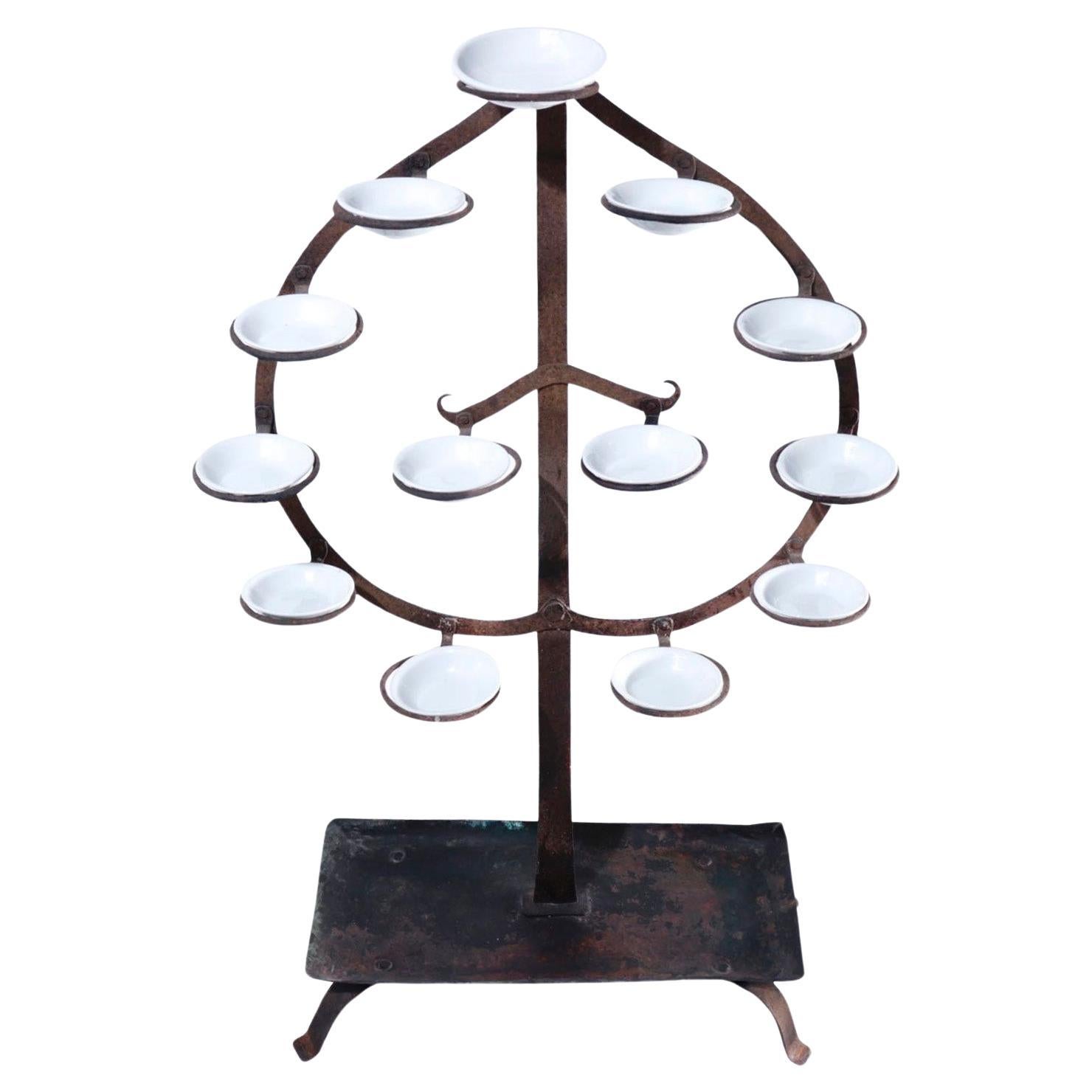Items Similar to Japanese Samurai Helmet Kabuto Edo Period (1603-1867)
Want more images or videos?
Request additional images or videos from the seller
1 of 17
Japanese Samurai Helmet Kabuto Edo Period (1603-1867)
About the Item
A Japanese Samurai black-lacquered helmet (kabuto) in suji bachi style and of a goshozan shape consisting of the:
- main dome (hachi) made from 16 plates in natural iron riveted together,
- neck guard (shikoro) made from 3 separate round-shaped iron plates held
together by fabric braids,
- protective front visor (mae-zashi),
- wing-like or ear-like projections to the sides of the helmet (fukigaeshi),
- small opening in the top of the hachi fitted with an ornamental grommet, often
resembling a chrysanthemum (tehen kanamono)
The kabuto is the helmet first used by the ancient Japanese warriors which in later periods became an important part of the traditional armor of the Japanese samurai, the O-yoroi armor.. In addition to being a practical and vital part of a samurai’s armor, the kabuto was also a symbol of his status and identity. The design was often customized to reflect his personal tastes and preferences.
The samurai were considered military nobility much like the knights of feudal Europe.
Overall, the helmet is in very good condition and well-preserved given its age. There is obvious pitting to the metal but this is quite normal. The interior liner shows obvious signs of use. If we stop and think about, it is remarkable to be able to hold a helmet that belonged to a samurai soldier who has probably seen many battles in his lifetime. If only this helmet could speak, what tales it would tell.
DIMENSIONS:
Width: 12.63”. (32.1 cm.)
Depth (including neck guard): 13.75”. (34.9 cm.)
Height (including neck guard): 9.63” (24.4 cm.)
- Dimensions:Height: 9.63 in (24.47 cm)Width: 12.63 in (32.09 cm)Depth: 13.75 in (34.93 cm)
- Style:Edo (Of the Period)
- Materials and Techniques:
- Place of Origin:
- Period:
- Date of Manufacture:unknown
- Condition:Wear consistent with age and use.
- Seller Location:Hampstead, CA
- Reference Number:1stDibs: LU7242235619492
About the Seller
5.0
Vetted Seller
These experienced sellers undergo a comprehensive evaluation by our team of in-house experts.
1stDibs seller since 2022
- ShippingRetrieving quote...Ships From: Hampstead, Canada
- Return PolicyA return for this item may be initiated within 14 days of delivery.
More From This SellerView All
- 19th Century Japanese Bronze Lion Meiji Period on Wood Base SignedLocated in Hampstead, QCThis 19th Century bronze male lion is in very good condition. No significant damage to the lion or its lacquered wood base. The left glass eye of the lion is missing. The joint where...Category
Antique 19th Century Japanese Meiji Sculptures and Carvings
MaterialsBronze
- Rare Traditional Chinese Bamboo Hand-carved Brush PotLocated in Hampstead, QCThis antique hand carved Chinese bamboo root brush pot is in excellent condition. No cracks in the wood and all carving is in great condition with no chips or missing pieces. The w...Category
Antique Mid-19th Century Chinese Qing Scholar's Objects
MaterialsBamboo
- Fine Chinese Bamboo Root Carved Brush PotLocated in Hampstead, QCThis antique hand carved Chinese bamboo root brush pot is in excellent condition. No cracks in the wood and all carving is in great condition with no chips or missing pieces. The w...Category
Antique Mid-19th Century Chinese Qing Scholar's Objects
MaterialsBamboo
- 16th-17th Century Chinese Ming Dynasty Fu Dog Censer Incense VaseLocated in Hampstead, QCThis is a rare Chinese Ming Dynasty bronze Fu Dog figural bronze tripod lidded censer used for incense. It has a Fu Dog or Qilin figural top lid with superbly carved details. The Fu ...Category
Antique 16th Century Chinese Ming Sculptures and Carvings
MaterialsBronze
- Antique Chinese Carved Bamboo Brush PotLocated in Hampstead, QCThis antique hand carved Chinese bamboo root brush pot is in excellent condition. No cracks in the wood and all carving is in great condition with no chips or missing pieces. The w...Category
Antique Late 19th Century Chinese Qing Scholar's Objects
MaterialsBamboo
- Art Deco Macassar Ebony Dining Table and Chairs, 1930’s - 1940’sLocated in Hampstead, QCAn exceptional Art Deco dining set in exotic macassar ebony veneer featuring a stunning table and six chairs completely reupholstered in cream-coloured faux leather, all in excellent...Category
20th Century Unknown Art Deco Dining Room Sets
MaterialsMacassar
You May Also Like
- Sujibachi kabuto 62-plate samurai helmet Haruta school, Edo periodLocated in Milano, ITSujibachi kabuto 62-plate samurai helmet Haruta school, Edo period 17th-18th century A lamellar helmet consisting of sixty-two plates joined with five rows of rivets. The surface is...Category
Antique Mid-17th Century Japanese Metalwork
MaterialsIron
- Sogonari Kabuto Samurai Helmet Shaped as a Human Head Early Edo PeriodLocated in Milano, ITSogonari Kabuto Samurai Helmet shaped as a Human Head Early Edo Period (1615 - 1867). Three-plates kawari kabuto covered with tawny hair to ...Category
Antique Early 1700s Metalwork
MaterialsFur
- Okitenugui Kabuto Samurai Helmet Shaped as a Head Towel Saika, Early Edo PeriodLocated in Milano, ITOkitenugui kabuto Samurai helmet shaped as a head towel Saika, early Edo period, 17th century The Haruta armorers who moved to Kii province in the early 17th century, took the name from the village where they worked, Saika, near Wakayama, possibly on request of the local daimyo, Asano Yukinaga, a great armour amateur. Specialised in the construction of plate helmets, they produced mainly two typologies of kabuto: one with six plates covered with a chrysanthemum-shaped plate on top and one shaped as a “head towel”, called okitenugui. The latter type of kabuto employs very heavy plates crafted in a curved manner and was improved in order to make it resistant to firearms. This okitenugui kabuto features some distinctive decorations of the Haruta school, including the application of cut-out iron elements, including eyebrows, washers and lozenge-shaped decorations on the sides. The ring on the top, however, is a rare feature and could be used to hold a small war flag.Category
Antique 17th Century Metalwork
MaterialsIron
- Pair of 18th Century Japanese Edo Period Lacquered Samurai Iron StirupsLocated in Dallas, TX18th century Japanese Edo period Lacquered Samouri Iron stirups with original wooden lacquered insoles. Truly a beautiful pair of Japanese ...Category
Antique Late 18th Century Japanese Edo Metalwork
MaterialsIron
- Koboshi Kabuto, Samurai Helmet with Standing Rivets Haruta SchoolLocated in Milano, ITKoboshi kabuto Samurai helmet with standing rivets Haruta School Early Edo Period, 17th century A 62-plate koboshi-bachi [helmet bowl with small s...Category
Antique 17th Century Japanese Arms, Armor and Weapons
MaterialsIron
- Antique Japanese Tomyodai, Edo periodLocated in Point Richmond, CAJapanese Tomyodai, a temple light stand created of iron and copper in the upright form of the Tama (Buddhist flaming jewel) with 13 ringlet projections to...Category
Antique Mid-19th Century Japanese Edo Metalwork
MaterialsCopper, Iron
Recently Viewed
View AllMore Ways To Browse
Black Knight Plate
Japanese Lacquer Plate
Japan Plated Lacquer
Samurai Yoroi
19th Japanese Samurai Armor
Incense Tool Vase
19 Century Copper Coffee Pot
Bronze Asian Boy
Archaic Ding
Cloisonne Tea Caddy
Mamluk Revival Brass Inlaid With Silver
Nepal Lamp
Ottoman Tombak
Antique Copper Tray Round With The Handles
Gong Cambodia
Antique Tibetan Singing Bowl
Arabian Incense Burner
Cloisonne Compote
